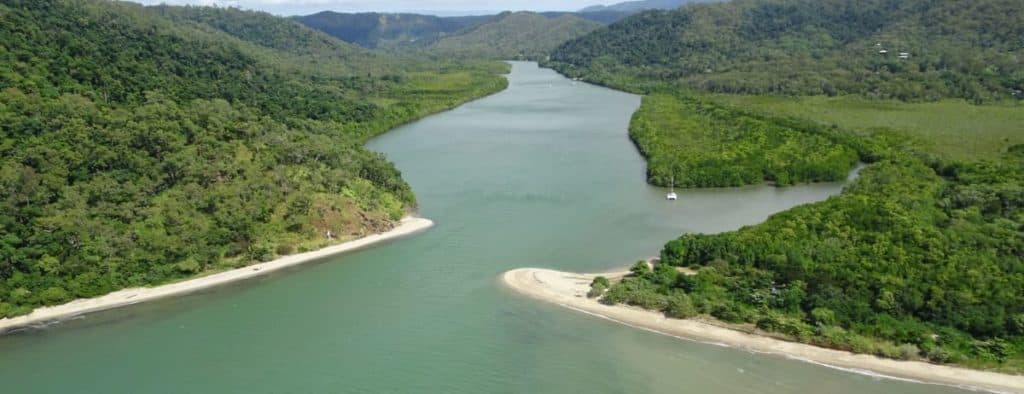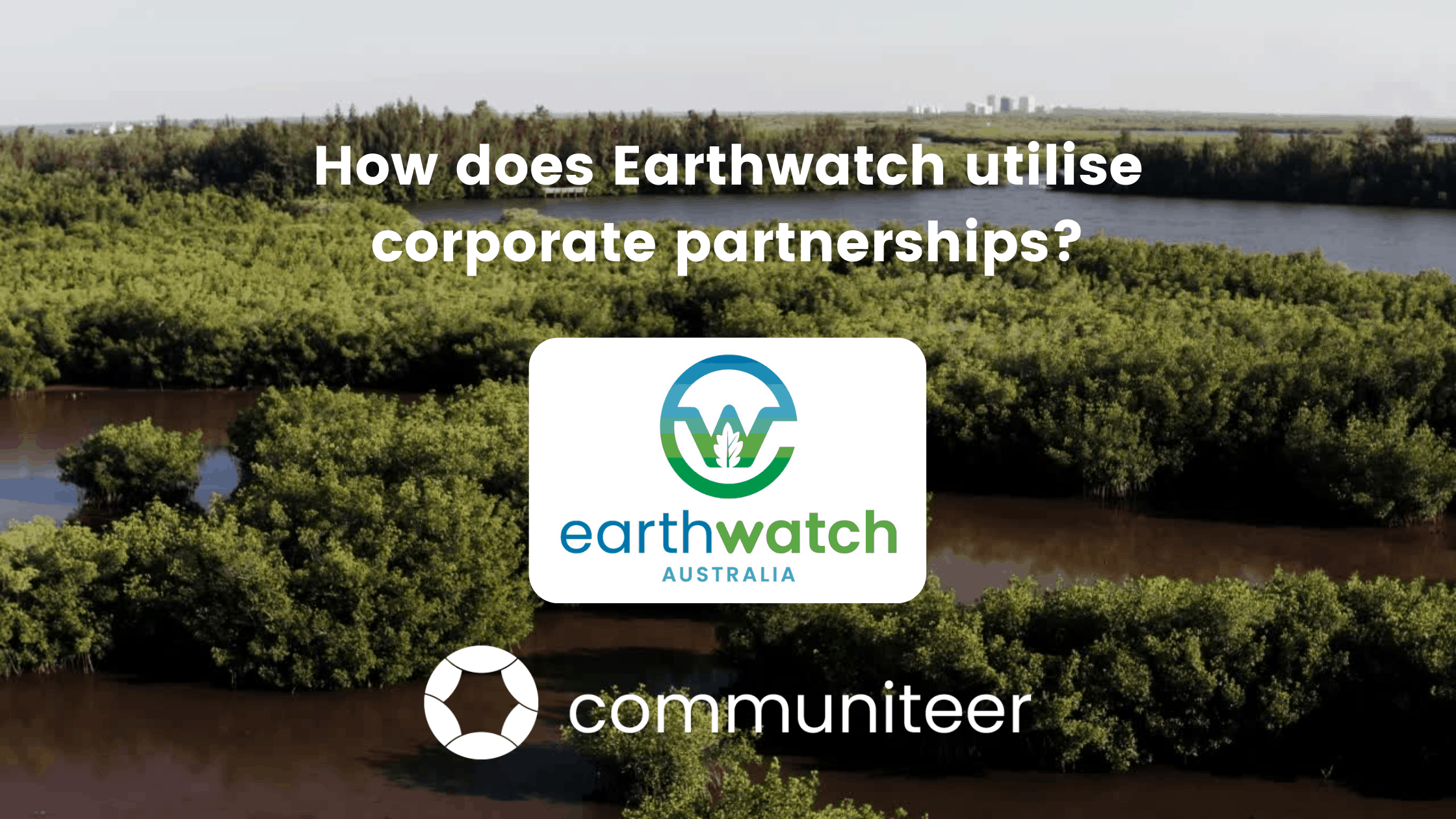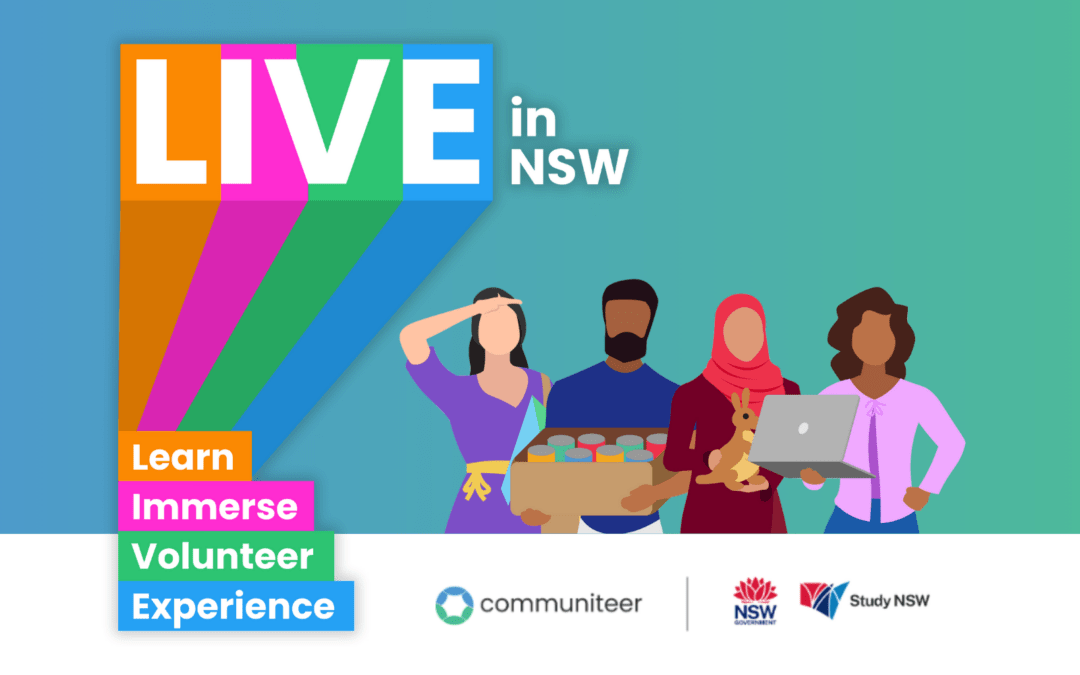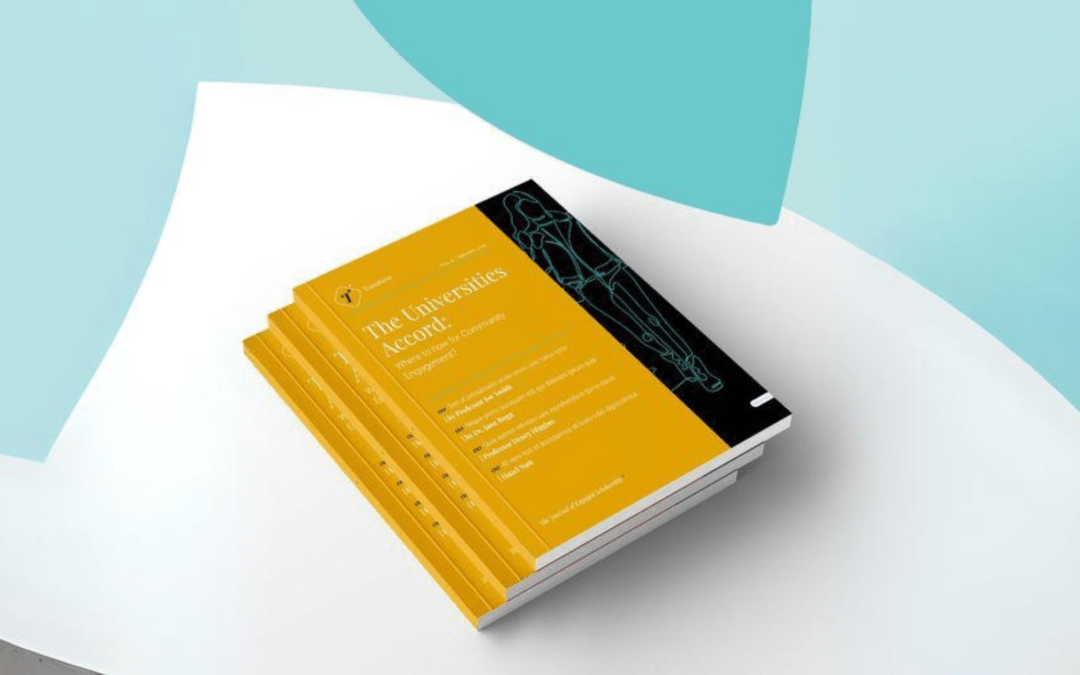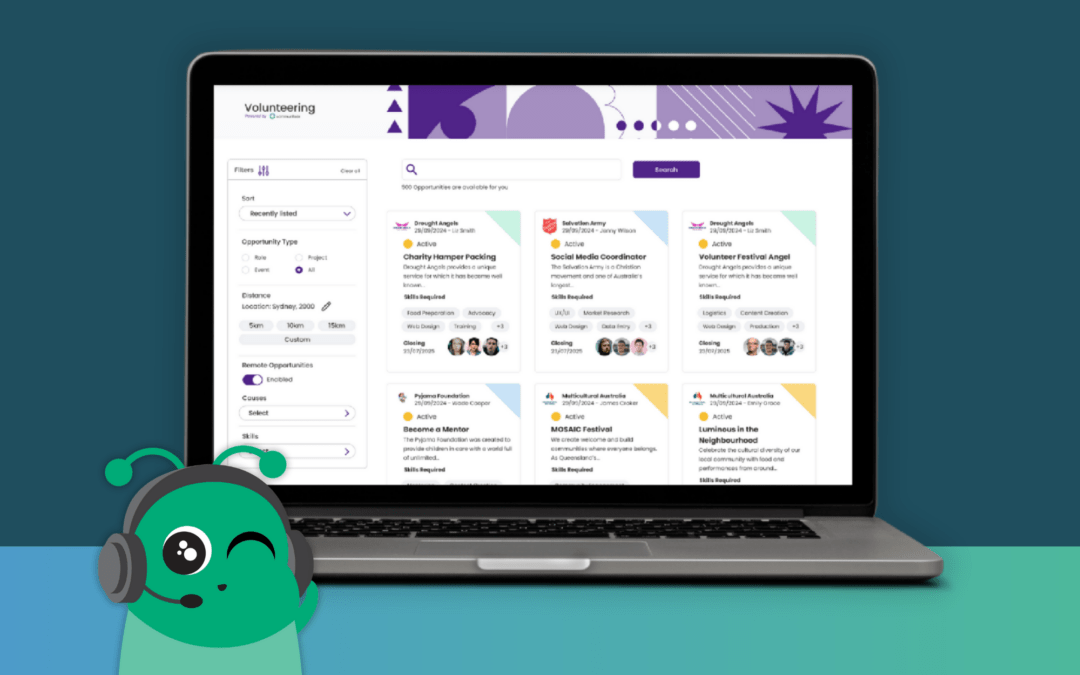Earthwatch Institute Australia is passionate about engaging corporations, governments, and community organisations to take action . Key areas where we can have the most impact include to keep ahead of climate change, save the reef and oceans, restore our iconic landscapes and protect our unique wildlife. How does Earthwatch utilise corporate partnerships?
Watch our interview with Earthwatch Institute below!
Communiteer is proud to partner with some not-for-profits as part of our Take Climate Action campaign. As a way to thank our campaign partners, we’d like to highlight some of their important work.
Jock Mackenzie, Earthwatch Institute’s Wetlands Program Manager and the Founder of Mangrovewatch, shares with Communiteer how Earthwatch Institute inspires and drives positive change through their partnerships to create a more sustainable future for all of us.
Hi Jock! The Sustainable Development Goals (SDGs) are at the core of Earthwatch Institute’s activities and impact. Can you explain what these are and what does Earthwatch Institute do to achieve them?
The SDGs are 17 interlinked goals that are a blueprint to achieve a better and more sustainable future for all. They were set by the United Nations as a way for all sectors to work towards a sustainable future. At Earthwatch, we see that the SDGs provide a common language for all. We partner with corporations, governments, and communities to achieve those. As these goals are global, we know that working together on them will help us achieve them faster. No one organisation or sector can do this alone. Earthwatch Institute’s role is to help corporate organisations, government organisations, and community organisations achieve their aspirations in progressing towards the SDGs that are linked to water, land and climate action.
A lot of organisations have the SDGs listed on their websites or sustainability pages. The pathway to achieving their desires is not so clear. Therefore, Earthwatch delivers action and engagement to get a clearer pathway to achieving these aspirational goals. We provide hard and tangible ways so people can work to create behaviour change within their organisation.
I’m the Wetlands Program Manager at Earthwatch Institute, so I engage people in mangrove monitoring and conservation. By working with organisations to protect mangroves, they can achieve the SDGs. This may be whether they are looking at reducing their carbon footprint, offsetting their carbon emissions, or looking at ways of increasing local livelihoods and local sustainability and fisheries.
What is a partnership Earthwatch Institute currently has?
We’re currently working with Mitsubishi Development Corporation on a program called Understanding Queensland’s Blue Carbon Resource. This particular program is focused on the Great Barrier Reef and in Daintree and Mackay. We have the advantage of working in one of the longest-running mangrove field studies in the world. We have 30 years of mangrove forest data that looks at how forests have been changing. Climate change impacts and how mangroves have been subjected to the impacts of sea-level rise.
With Mitsubishi, we’re looking at what’s happening in the region around there. What we can do as a society, and also what managers, local councils, and natural resource managers can do to better protect that carbon resource. We have four trips a year where we take citizen scientists from teachers, students, traditional and indigenous rangers and Mitsubishi staff to the Daintree and Mackay. They measure the trees to see how much carbon is stored in them. We also take samples to measure how much carbon is stored in the mangrove sediment.
That way, we’re getting a picture of how much carbon storage there is at the moment. We then compare that carbon storage with the long-term historical data that we have collected. We can see how carbon capture has changed over time.
Our partnership with Mitsubishi is about understanding what’s there. What will be lost if we don’t protect the mangroves. Also, what we can do to better protect those mangrove ecosystems into the future.
What are some of the other partnerships you currently have?
I also have an education program with the Great Barrier Reef Foundation. This is a non-government organisation that was funded through the federal government to develop reef protection programs. Whilst it’s reef- and coral-focused, they’ve understood that mangroves are an important player in protecting the Great Barrier Reefs. We’ve set up a Protecting Wetlands for the Future program, which is about developing lesson plans and school curriculum resources for high school students . Teachers can take their students out into mangroves and salt marsh habitats. The data from these citizen science studies will feed directly back to us to inform tidal wetland management plans, and subsequently, inform local governments about the issues happening.
We’re also directly reporting that data to the federal government national greenhouse accounts to develop models of mangrove blue carbon around the country. This is so that the government has a better idea of how much carbon is stored in those mangroves, so they can meet their obligations to the Paris Agreement and other international agreements around carbon emissions. Thus, these students are doing a lesson on mangroves and are collecting data that has international implications. We’re training teachers and each of them has 100 students, so that’s 4,000 students who have been engaged in the process of understanding mangroves and the role they play in tackling climate change, the threats they face, and how we should protect them better.
Coming out of the pandemic, what is Earthwatch Institute doing with your partners in 2021?
We are very fortunate in Australia that COVID has eased, so we are going ahead with our programs. We’re encouraging people to sign up for all the programs that we have currently. For example, my program Protecting the Reef Coastal Frontier, which is part of the Understanding Queensland Blue Resource program. We also have Recovery of the Great Barrier Reef, which is looking at restoring coral reef habitats from algae. We have teaching programs with Bush Blitz, with people going out and collecting the biodiversity data. There are student challenge programs to get students out to natural environments and work alongside scientists.
Why should organisations get in touch with Earthwatch Institute?
If you are an organisation that has aspirations to achieve your sustainable development goals, then we encourage you to get in touch with us and look at how we can help deliver your SDGs and achieve your sustainability goals at an organisational level. Through partnering with us, you can get your corporate citizens out into the environment, connecting with nature, collecting real scientific data that has real-world impacts, and, together we can save the world.
